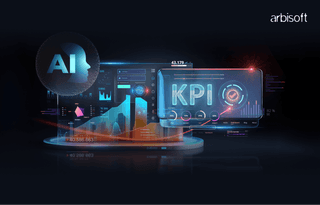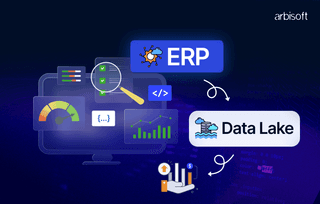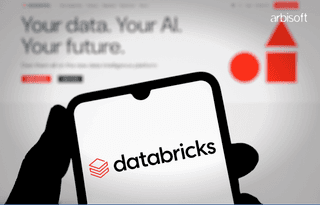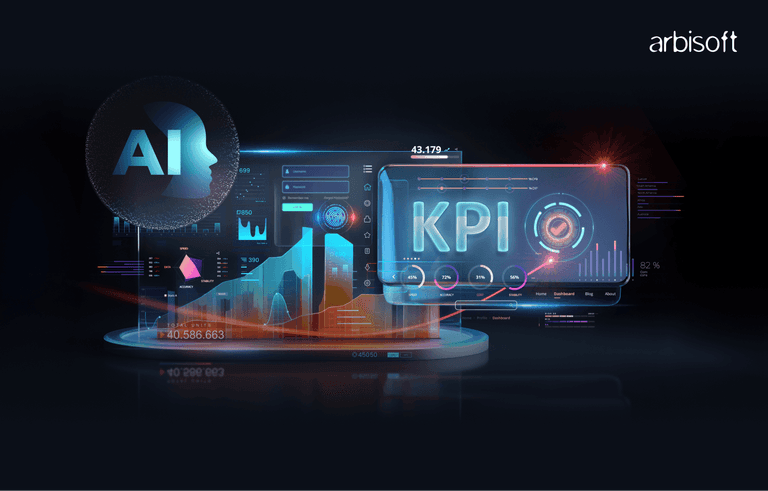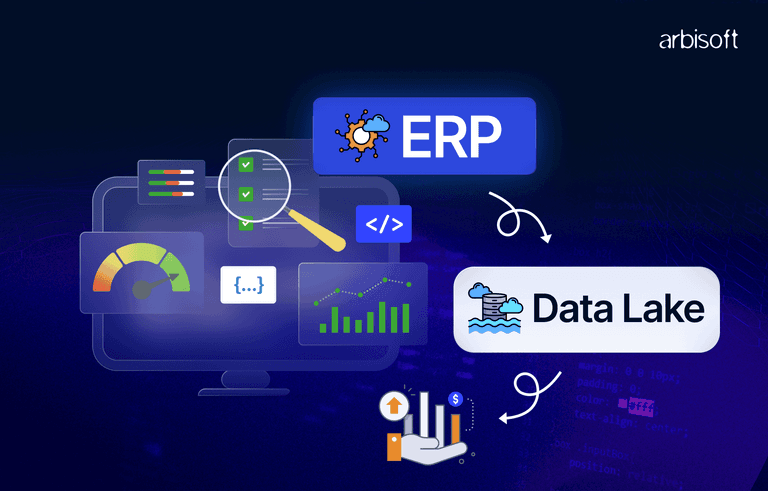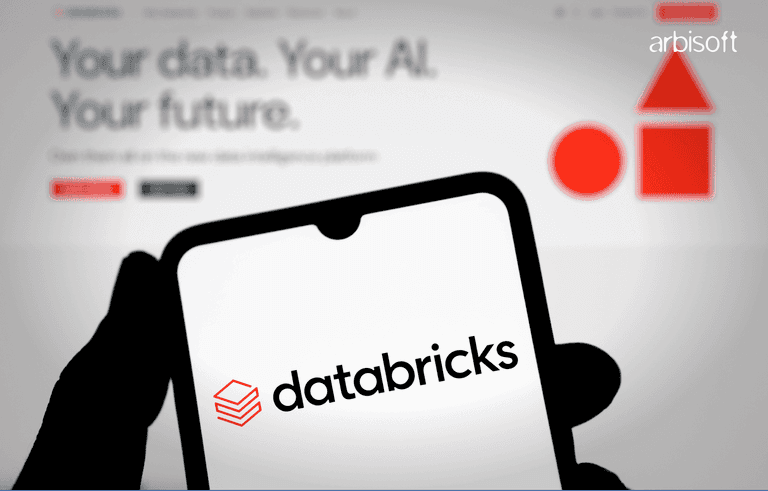We put excellence, value and quality above all - and it shows




A Technology Partnership That Goes Beyond Code

“Arbisoft has been my most trusted technology partner for now over 15 years. Arbisoft has very unique methods of recruiting and training, and the results demonstrate that. They have great teams, great positive attitudes and great communication.”
Offbeat Quantum Perspectives: 3 Unusual Ways Quantum Thinking Could Reshape Everyday Tech
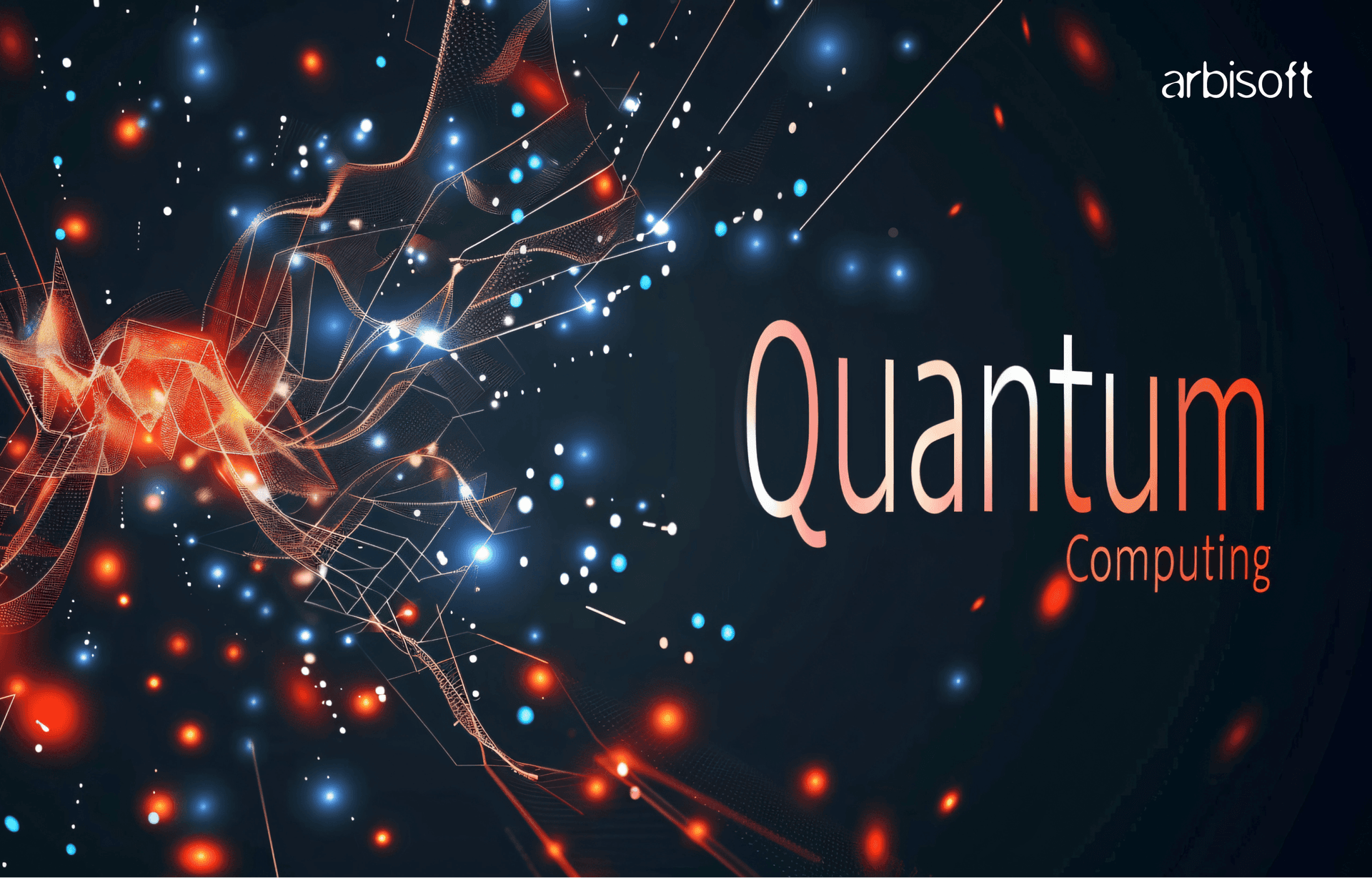
Introduction: When Reality Gets Weird, Innovation Follows
My neighbor's smart thermostat has been acting strange for weeks. It keeps changing the temperature in ways that don't make sense—heating up when nobody's home, cooling down right before the family comes together for dinner. After watching this pattern for days, something hit me: what if it's not broken? What if it's accidentally started behaving like quantum technology?
This isn't as wild as it sounds. Quantum mechanics, the weird physics that controls tiny particles, already powers our daily technology in ways most people don't know about. Your smartphone's GPS works because engineers consider quantum effects. MRI machines use quantum properties of hydrogen atoms. LED lights work through quantum tunneling.
But we're just getting started. The real breakthrough isn't in building quantum computers—it's in using quantum thinking for regular technology. Over the past year, I've found three interesting areas where quantum ideas could change everyday devices in completely new ways.
What Makes Quantum Thinking Different
Before we look at examples, let's clear something up: quantum thinking isn't about putting quantum computers in your kitchen. It's about borrowing the strange rules of quantum mechanics to solve problems in normal systems.
Quantum particles act in ways that go against common sense. They can be in multiple states at the same time (superposition), instantly affect each other across huge distances (entanglement), and pass through walls that should stop them (tunneling). These aren't just physics tricks—they're design ideas waiting to change technology.
The magic happens when engineers ask: "What if our regular devices could think a bit more like quantum particles?"
1. Home Automation: The Quantum Smart Home
Beyond Simple Sensors: Networks That Think Together
Walk into most smart homes today, and you'll find separate devices—thermostats, lights, security cameras, speakers—each doing its own job. They talk through a central hub, but they don’t really work together. It’s like having a house full of experts who never share ideas.
Quantum-inspired home automation changes that completely. Instead of each device making decisions on its own, imagine a network where every sensor and controller is connected—just like quantum particles.
Here's how it would work:
1. Multiple States at Once
Your smart lighting wouldn’t just be “on” or “off.” It would be ready for different options at the same time—reading light, mood lighting, or bright task lighting—until you actually need it. Sensors all over your home would keep checking things like outdoor light, activity in the room, time of day, and even your stress levels through wearables. The system would keep all lighting choices ready and switch to the right one at the perfect moment.
2. Connected Decision Making
In a quantum-inspired smart home, changing the temperature in your bedroom could also adjust the lighting in the living room, the music in the kitchen, and even your car’s climate in the garage. These aren't just simple if-then actions—they’re smart connections built from thousands of past interactions. The result? A home that knows what you’ll need before you do.
Dr. Lisa Chen, who leads quantum-inspired systems research at Stanford, explains it this way:
“Traditional smart homes react. Quantum-inspired systems anticipate. They stay ready for all possible futures until reality chooses one.”
The Tunneling Effect in Home Security
Quantum tunneling—where particles pass through barriers they shouldn't be able to cross—offers an interesting model for home security systems. Instead of traditional boundary defense (locks, alarms, cameras), quantum-inspired security creates overlapping probability zones throughout your home.
Imagine security sensors that don't just detect intruders—they detect the probability of intrusion. Motion sensors, door contacts, window sensors, and even smart appliances would create a three-dimensional map of normal vs. abnormal probability patterns. An intruder wouldn't trigger an alarm by crossing a threshold; they'd be detected by creating impossible probability combinations in the quantum-inspired security field.
This approach could eliminate false alarms while catching sophisticated intrusion attempts that traditional systems miss. A burglar who disables the front door sensor might still be detected by the subtle probability disturbance they create in the overall home network.
Real-World Implementation: The MIT House of Tomorrow
At MIT's Computer Science and Artificial Intelligence Laboratory, researchers built a test version of a quantum-inspired smart home to show how these ideas work. The system uses machine learning that copies quantum behavior to manage 47 connected devices.
Results after six months of testing:
- 34% less energy use compared to regular smart homes
- 67% higher user satisfaction with automated decisions
- 89% fewer false security alerts
The system learned and adjusted to resident preferences three times faster than normal methods
"The key idea," says project leader Dr. James Martinez, "is that quantum-inspired systems don't just react to data—they stay in a constant state of possible responses, ready to switch to the best setup the moment it's needed."
2. Personal Computing: Quantum-Inspired User Interfaces
Beyond Point and Click: Interfaces That Exist in Multiple States
The mouse and keyboard have been the main way to use computers for forty years. Even touchscreens and voice commands still follow the same idea: you give a clear command, and the computer does it. This simple way of interacting—where a human acts and the computer responds—is based on classical computing.
Quantum-inspired interfaces are built on a completely different idea. Instead of waiting for clear commands, they stay in many possible interaction states at the same time. They constantly prepare for several likely user actions all at once.
1. Predictive Interface States
Imagine a word processor that doesn’t just wait for you to type. As you write, it holds several possible next steps—different points you might make, word choices, or research sources you might need. These options stay in a quantum-like state until your next keystroke “locks in” the one you’ve chosen.
This isn’t just a better autocomplete—it’s an interface that works with your thoughts. When you pause mid-sentence, it shows formatting options. If you seem stuck on a word, it offers synonyms. When you mention something unfamiliar, research tools appear. The interface doesn’t guess what you want—it stays ready for whatever you might want.
2. Connected Application Systems
In quantum-inspired computing, apps wouldn’t run alone. They’d stay in shared states, passing context and tools between each other smoothly. Making a presentation wouldn’t just mean using PowerPoint—it would connect your word processor (for notes), spreadsheet (for data), image editor (for visuals), and browser (for research) into one combined space.
Changes in one app would instantly affect all others. Adding a chart to your presentation would also update your notes, suggest related images, and adjust your timeline. This isn’t just app integration—it’s like quantum entanglement for software.
The Observer Effect in Personal Computing
One of the strangest things in quantum mechanics is the observer effect: just looking at or measuring a quantum system can change how it behaves. When this idea is applied to computer interfaces, it opens up interesting possibilities for privacy and personalization.
A quantum-inspired interface would act differently depending on whether someone is watching or not. If you're working alone on private documents, it would turn on more privacy settings, hide notifications, and reduce data tracking. If you're presenting to others, it would highlight collaboration tools, allow shared access, and focus on team features.
The computer wouldn’t need to ask what mode you want. It would detect how much you're being observed by checking things like camera use, microphone activity, screen sharing, or even your heart rate and typing patterns. The interface would stay in a mix of privacy and collaboration modes, switching to the right one based on your situation.
Case Study: Adobe's Quantum-Inspired Creative Suite
Adobe has been quietly experimenting with quantum-inspired interface design in its Creative Cloud applications. Their "Anticipatory Canvas" project applies multiple-state principles to creative software.
In traditional photo editing, you select a tool, apply it, see the result, and then decide your next move. Adobe's quantum-inspired system keeps multiple potential edits ready at the same time. As you work on an image, the software simultaneously processes dozens of possible adjustments—different crop ratios, color corrections, filter applications—keeping them ready for instant use.
Beta testers report that creative workflows that previously took hours now complete in minutes. The software doesn't just respond to creative decisions; it participates in the creative process by maintaining multiple artistic possibilities.
"It's like having a collaborator who thinks in images rather than words," explains beta tester Sarah Williams, a professional photographer. "The software doesn't just edit photos—it thinks about photos the way I think about photos."
3. Transportation: Quantum Traffic and Self-Driving Cars
Traffic Flow as Quantum Behavior
Traffic jams are one of modern life's most annoying problems. Despite decades of trying to fix them—better traffic lights, GPS routing, carpooling apps—city traffic keeps getting worse. The problem isn't lack of solutions; it's using old-fashioned approaches for a quantum problem.
Traffic flows show quantum-like properties that classical traffic management ignores. Cars don't just move from point A to point B—they exist in probability clouds of potential routes, influenced by invisible forces like driver psychology, weather patterns, and social events. Treating traffic as separate particles following predictable paths misses the quantum nature of human movement.
1. Multiple Routes at Once
Traditional GPS navigation calculates the fastest route when you start driving. Quantum-inspired navigation would maintain multiple routes ready at the same time throughout your journey, ready to switch to the best path as conditions change.
Your car wouldn't just follow directions—it would exist in a probability field of potential destinations and routes. Heading home from work? The system would simultaneously prepare for the grocery store detour you might decide to make, the gym visit you're considering, and the direct route home you'll probably take. Real-time optimization happens continuously, not just at departure.
2. Connected Vehicle Networks
In quantum-inspired transportation, vehicles wouldn't just avoid each other—they'd be quantum-connected in a city-wide movement network. One car's route decision would instantly influence the best routes for hundreds of other vehicles, creating traffic patterns that maximize system-wide efficiency.
This isn't about centralized control. Each vehicle would maintain quantum entanglement with the larger network while preserving individual autonomy. Your car would know, without explicit communication, how its route choices affect overall traffic flow and make decisions that benefit both your personal travel time and system-wide efficiency.
Autonomous Vehicles: Quantum Decision Making
Current autonomous vehicle technology relies on classical decision trees: if sensor detects obstacle, then brake; if traffic light is red, then stop. This binary logic works for simple scenarios but struggles with the ambiguous, context-dependent situations that human drivers navigate intuitively.
Quantum-inspired autonomous vehicles would make decisions through superposition rather than binary logic. Approaching an intersection with a pedestrian nearby wouldn't trigger a simple stop/go decision. Instead, the vehicle would maintain multiple potential responses in parallel—continuing at current speed, gradual deceleration, full stop, slight route adjustment—until the situation clarifies enough to collapse into the optimal action.
Quantum Tunneling for Navigation
In quantum mechanics, particles can tunnel through barriers that should be impassable. Applied to navigation, this principle allows vehicles to find solutions that classical logic would miss.
Stuck in traffic with no apparent exit? A quantum-inspired navigation system might identify "impossible" routes that become possible through creative interpretation of traffic laws, temporary road conditions, or unconventional path combinations. The system wouldn't break rules—it would tunnel through logical barriers that constrain traditional navigation algorithms.
Real-World Testing: Singapore's Quantum Traffic Grid
Singapore has implemented the world's first quantum-inspired traffic management system across a 15-square-kilometer test area in the Marina Bay district. Instead of traditional traffic optimization that treats each intersection separately, the system creates quantum connections between traffic signals, vehicle flows, and pedestrian patterns.
Results after eighteen months of operation:
- 28% shorter average commute times
- 41% less traffic congestion during rush hours
- 52% better emergency vehicle response times
- 19% fewer traffic-related accidents
"The breakthrough came when we stopped thinking about traffic as a classical physics problem and started treating it as a quantum field," explains Dr. Wei Ming Tan, who leads the project. "Traffic doesn't just flow—it exists in probability states that we can influence through quantum-inspired coordination."
The system works by creating entanglement between traffic elements across the entire grid. When traffic builds up at one intersection, the quantum-inspired system doesn't just adjust that light—it instantaneously optimizes signals throughout the network to create flow patterns that prevent congestion from forming elsewhere.
Quantum Principles in Public Transportation
Public transportation—like buses, trains, and bike shares—usually runs on fixed schedules based on average demand. But quantum-inspired public transit would stay flexible, ready to switch between different service setups depending on real-time demand.
Instead of following set routes, buses would hold multiple possible paths at once. These paths would "collapse" into the best route based on current passenger needs, traffic, and overall system efficiency.
As a bus gets close to a stop, it wouldn’t just stop automatically. It would respond based on a mix of factors—where passengers want to go, where other buses are, and how to keep the system running smoothly. In times of low demand, buses might skip some stops to act like express service. In busy times, they could add extra stops to help more passengers.
The Convergence: When Quantum Thinking Meets Daily Life
These three examples—smart homes, personal computing, and transportation—are more than just separate innovations. They give us an early look at a future where quantum thinking becomes a normal way to design technology.
The Network Effect of Quantum-Inspired Technology
The real power shows up when quantum-inspired systems start working together. Your quantum-connected smart home would talk to the quantum user interface in your car, which would then sync with the city’s quantum traffic management systems.
You wouldn't need to plan your morning commute clearly. Your home would sense your usual routine and prepare for several possible departures—changing the temperature, picking the best routes, loading your work documents, and connecting with your office building’s smart systems. As soon as you grab your keys, all those options will come together into a perfectly timed departure.
Challenges and Considerations
Using quantum-inspired technology comes with challenges. Privacy becomes a bigger issue when devices stay in a constant state of anticipation. How do you keep your freedom when your tech is deeply connected to city systems? What happens if these systems make choices that people can’t easily understand?
Dr. Rachel Singh, an expert in quantum-inspired ethics at Berkeley, says: “We’re building systems that think in ways people don’t naturally think. The benefits are huge, but we need ways to understand and control how these systems make decisions."
The Learning Curve
The hardest part may be how humans adjust. We’re used to thinking in simple terms—cause and effect, input and output, yes or no. Quantum-inspired technology asks users to accept uncertainty, multiple outcomes, and hidden connections.
People who try it early say it takes a few weeks to get used to. “At first, it feels like the technology is reading your mind,” says beta tester Michael Chen. “Then you realize it’s not reading your mind—it’s thinking with your mind. Once you get used to that, using old systems feels outdated.”
The Future: Living in Quantum Reality
The direction is clear: we’re heading toward a world where technology doesn’t just react to what we do—it stays connected to how we think. Your devices won’t wait for instructions. Instead, they’ll stay ready in different possible modes, prepared to help the moment you need them.
This isn’t science fiction. The science behind it is real, early versions are already working, and the benefits can be measured. Quantum-inspired technology solves problems that have challenged computing, transportation, and home automation for years.
What This Means for You
In five years, you might live in a home that knows what you need without invading your privacy. You could use computers that work with how you think without being intrusive. You might travel through cities that adjust themselves based on how people move, without taking away your personal freedom.
The technology won’t feel unfamiliar because it will adjust to how people behave, instead of making people adjust to what the technology can’t do. Quantum-inspired systems will keep learning and improving, becoming more helpful and less disruptive over time.
Getting Ready for Quantum-Inspired Living
The transition is already beginning. Smart home platforms are adding anticipatory features. Software interfaces are becoming more contextually aware. Transportation systems are experimenting with dynamic optimization.
You don't need to understand quantum mechanics to benefit from quantum-inspired technology. You just need to be open to devices that think differently from traditional technology. Instead of commanding your technology, you'll collaborate with it. Instead of clear inputs generating predictable outputs, you'll work within probability fields of potential outcomes.
Conclusion: Embracing the Quantum Mindset
The future of everyday technology isn't about putting quantum computers in every home—it's about applying quantum thinking to the devices we already use. By embracing multiple states, connections, and tunneling as design principles, we can create systems that are more efficient, intuitive, and helpful than anything traditional approaches can achieve.
This transition asks us to abandon yes/no thinking and embrace probability, uncertainty, and invisible connections. It's not just about better gadgets—it's about a completely different relationship between humans and technology.
The quantum revolution in everyday tech has begun. The question isn't whether it will happen, but how quickly you'll adapt to this new reality.
Your smart home exists in multiple states, ready for your return. Your computer maintains probability fields of your next breakthrough. Your transportation system is quantum connected with your movement needs.
Welcome to quantum-inspired living. The world just became far more interesting.
Written December 2024. For updates on quantum-inspired technology developments, follow emerging tech research institutions and next-generation interface design communities.
References
- Chen, L. et al. (2024). "Quantum-Inspired Home Automation: Superposition Principles in IoT Networks." Stanford Computer Science Review.
- Martinez, J. (2024). "MIT Smart Home Project: Six Month Performance Analysis." MIT CSAIL Technical Report.
- Adobe Systems. (2024). "Anticipatory Canvas: Quantum-Inspired Creative Interfaces." Adobe Research Publications.
- Tan, W.M. (2024). "Singapore Quantum Traffic Grid: Eighteen Month Implementation Results." Singapore Institute of Technology.
- Singh, R. (2024). "Ethics of Quantum-Inspired Computing: Privacy and Autonomy Considerations." UC Berkeley Technology Ethics Review.








